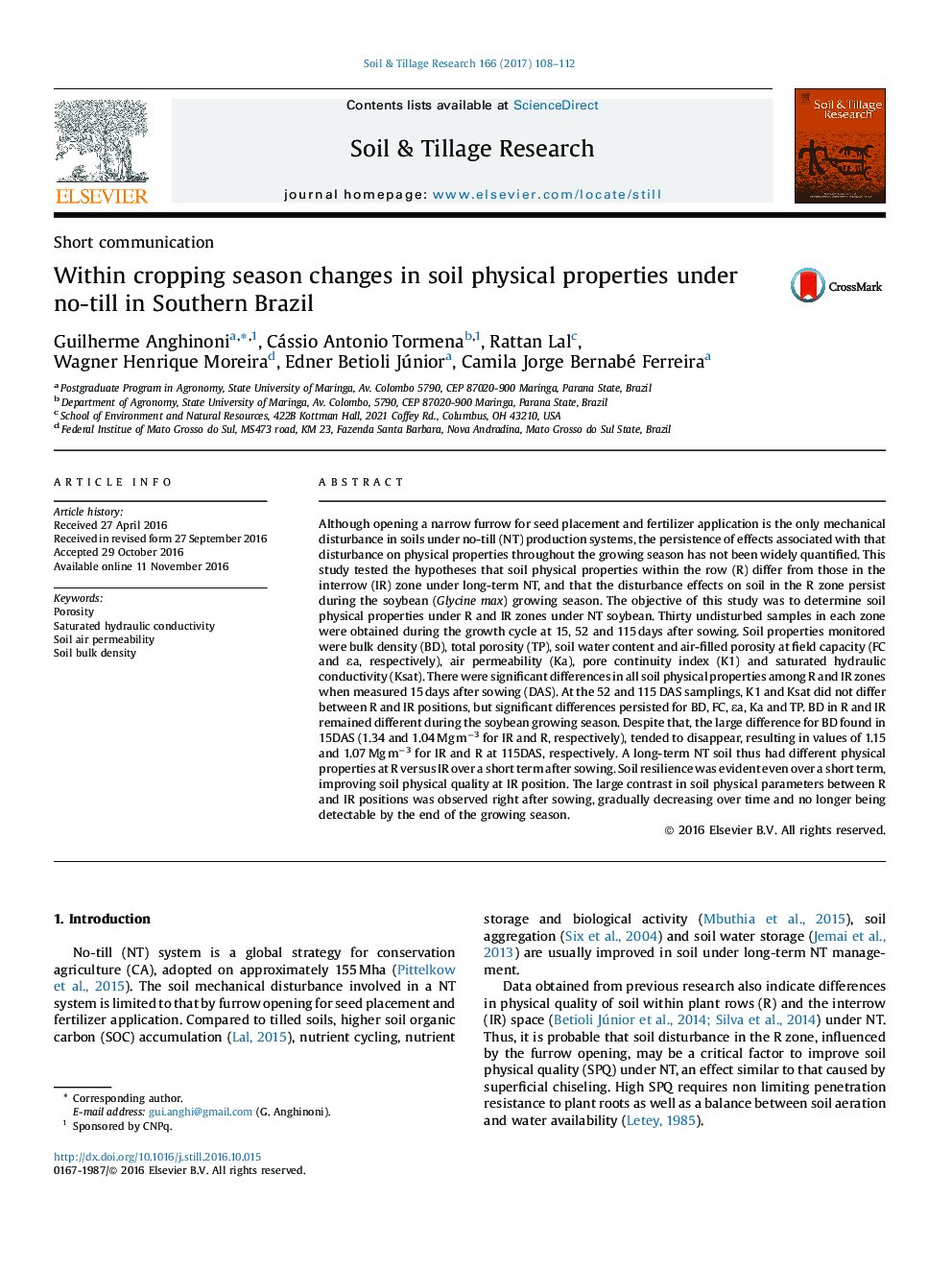| کد مقاله | کد نشریه | سال انتشار | مقاله انگلیسی | نسخه تمام متن |
|---|---|---|---|---|
| 4927613 | 1431837 | 2017 | 5 صفحه PDF | دانلود رایگان |
- Soil physical quality was studied at row and interrow during a cropping season.
- The largest difference on soil physical quality happens right after sowing.
- Differences tend to disappear at the end of soybean cropping season.
Although opening a narrow furrow for seed placement and fertilizer application is the only mechanical disturbance in soils under no-till (NT) production systems, the persistence of effects associated with that disturbance on physical properties throughout the growing season has not been widely quantified. This study tested the hypotheses that soil physical properties within the row (R) differ from those in the interrow (IR) zone under long-term NT, and that the disturbance effects on soil in the R zone persist during the soybean (Glycine max) growing season. The objective of this study was to determine soil physical properties under R and IR zones under NT soybean. Thirty undisturbed samples in each zone were obtained during the growth cycle at 15, 52 and 115 days after sowing. Soil properties monitored were bulk density (BD), total porosity (TP), soil water content and air-filled porosity at field capacity (FC and εa, respectively), air permeability (Ka), pore continuity index (K1) and saturated hydraulic conductivity (Ksat). There were significant differences in all soil physical properties among R and IR zones when measured 15 days after sowing (DAS). At the 52 and 115 DAS samplings, K1 and Ksat did not differ between R and IR positions, but significant differences persisted for BD, FC, εa, Ka and TP. BD in R and IR remained different during the soybean growing season. Despite that, the large difference for BD found in 15DAS (1.34 and 1.04 Mg mâ3 for IR and R, respectively), tended to disappear, resulting in values of 1.15 and 1.07 Mg mâ3 for IR and R at 115DAS, respectively. A long-term NT soil thus had different physical properties at R versus IR over a short term after sowing. Soil resilience was evident even over a short term, improving soil physical quality at IR position. The large contrast in soil physical parameters between R and IR positions was observed right after sowing, gradually decreasing over time and no longer being detectable by the end of the growing season.
Journal: Soil and Tillage Research - Volume 166, March 2017, Pages 108-112
